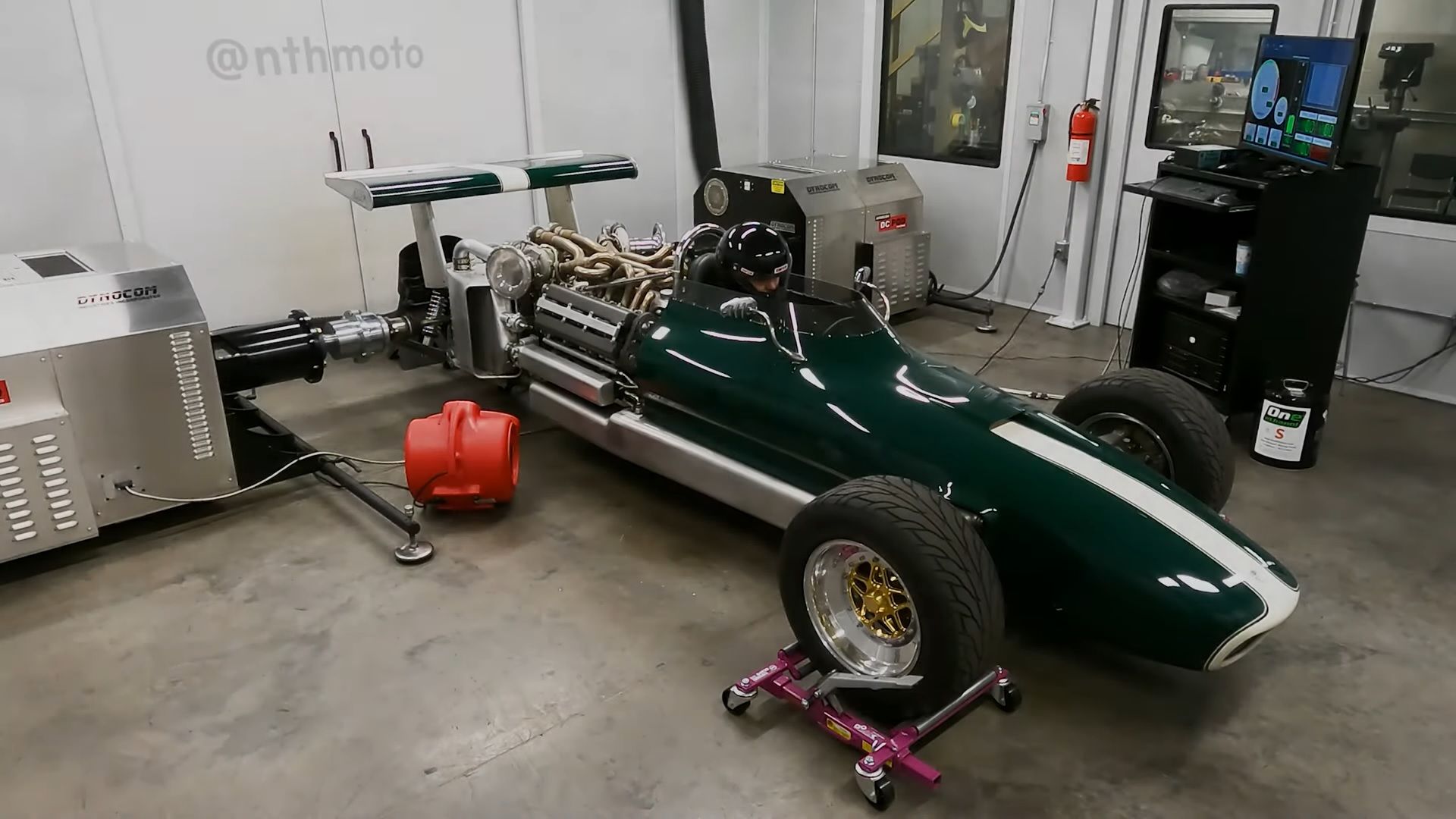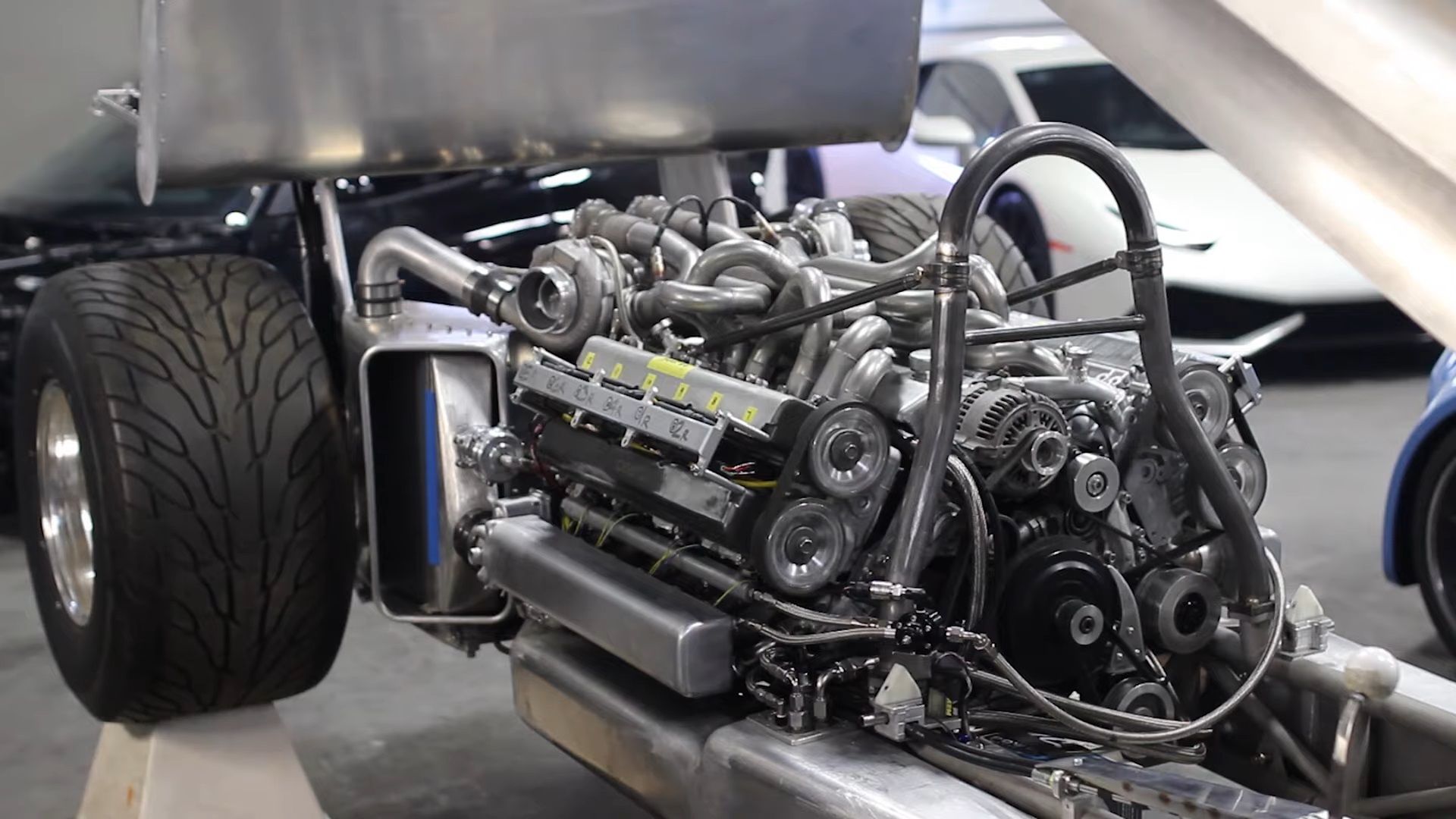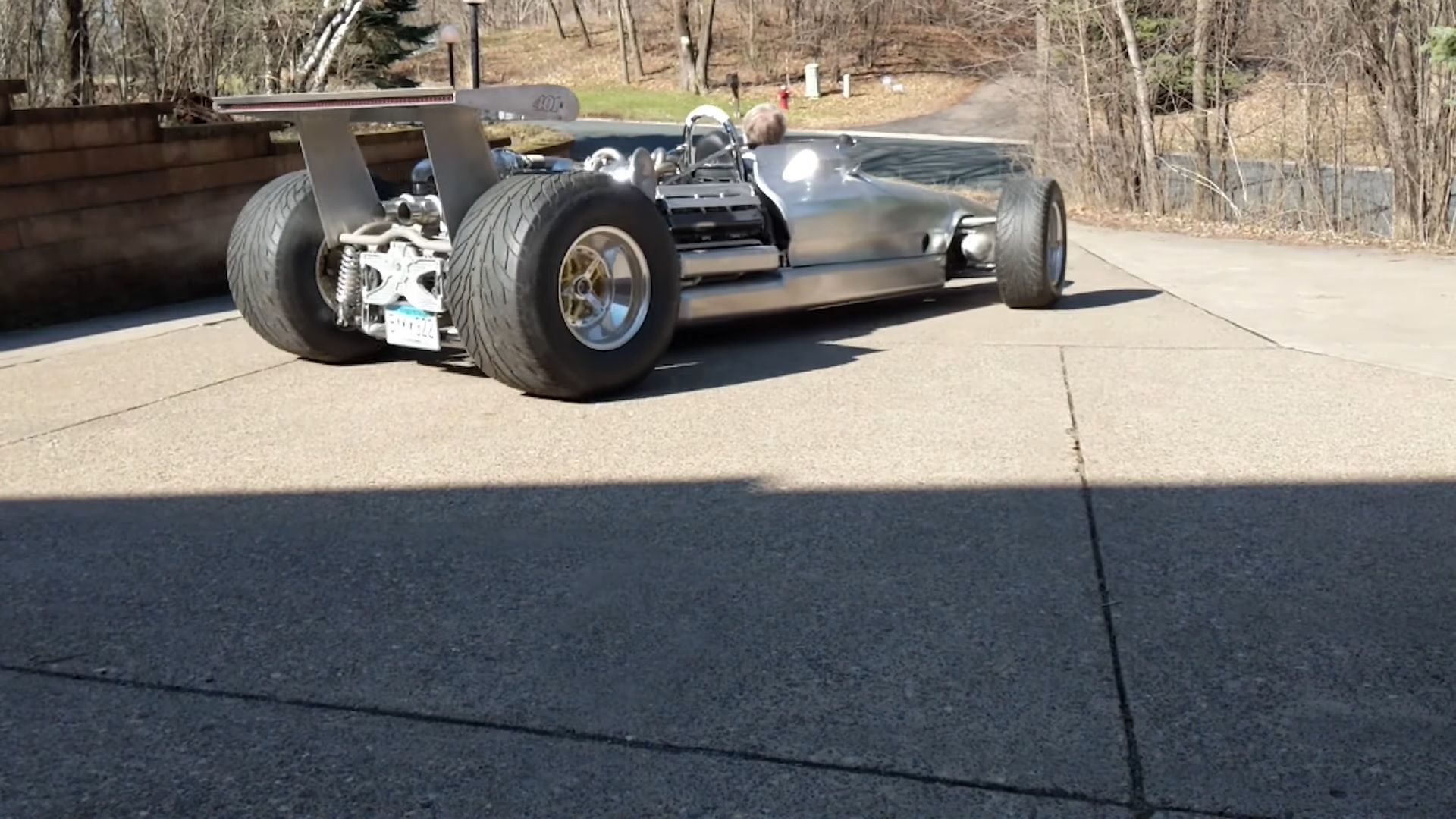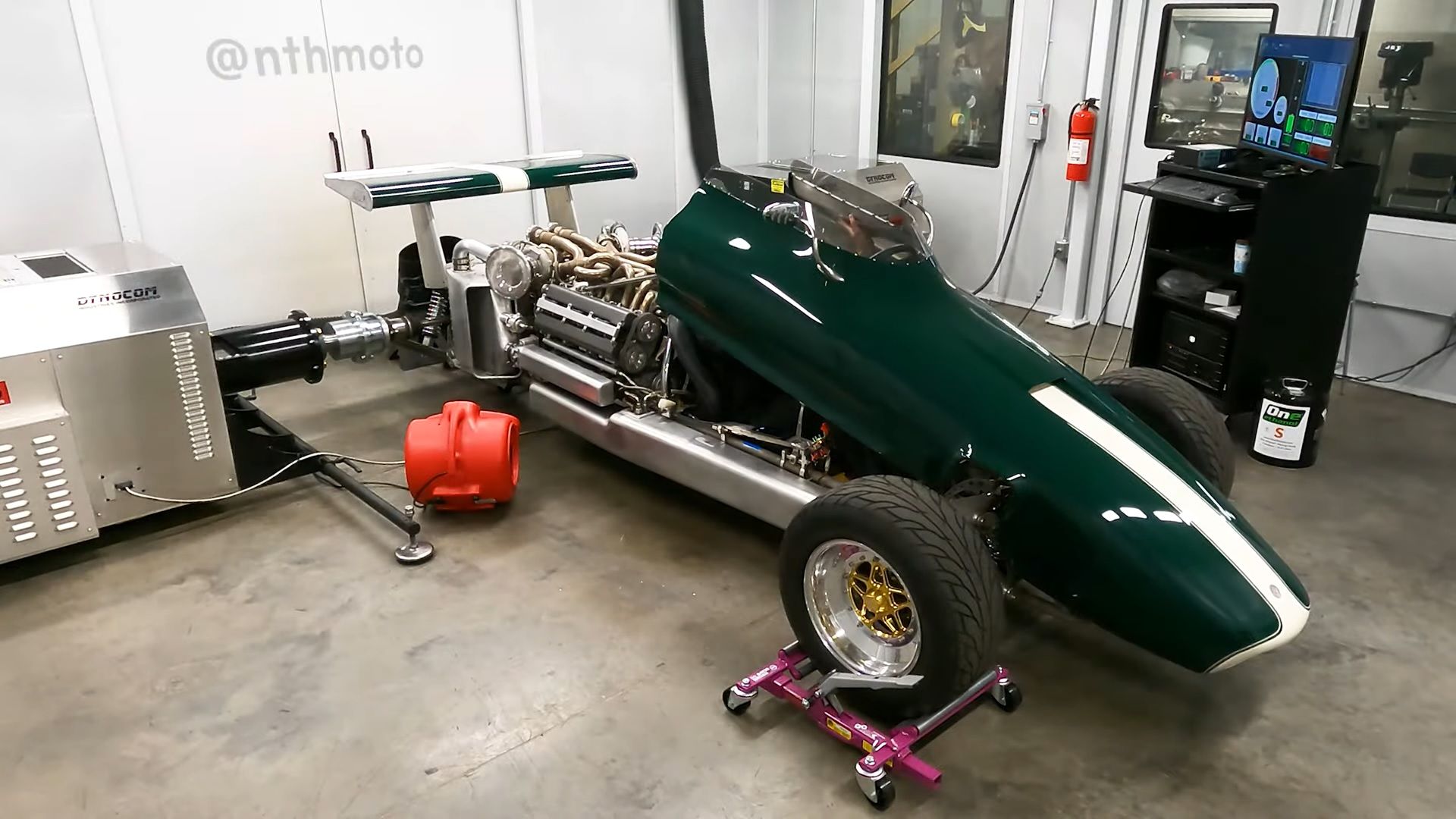It's been over nine years since Don Groff began the unlikely task of building from scratch an open-wheel car that would be powered by a mid-mounted, 12-cylinder version of the famous Toyota 1JZ engine. Now, finally, the project is approaching the final stretch, and Groff has managed to dyno his baby with impressive results that put his single-seater in the vicinity of actual F1 cars in terms of torque and power output.
Twice the cylinders, twice the fun!
Toyota introduced the 1JZ version of its now-famous JZ family of powerplants all the way back in 1990 as a replacement for the M-series six-pots. While the JZ engines retained the inline-six architecture of the M-series engines, they were more efficient and, with a 24-valve DOHC setup, quite modern at the time. The first version of the 1JZ was the 1JZ-GE that developed 168 horsepower and 173 pound-feet of torque in non-turbo, non-VVTI trim.
As it was designed to be used in RWD cars, the Mk. III Supra was powered by a version of the 1JZ, too, namely, the updated 1JZ-GTE. Originally, the 1JZ-GTE sported twin CT12A turbochargers and an air-to-air intercooler for an output of 276 horsepower and 268 pound-feet of torque, enough to give the new Soarer GT some street cred. However, by the time the 1JZ-GTE had been slotted into the Supra (particularly the Supra 2.5 Twin-Turbo R), it had reached its third generation meaning it featured Toyota's BEAMS architecture with a reworked head and much-improved VVTI technology. While power remained at 276 horsepower, torque went up to 280 pound-feet of twist.
Now, that's not bad for a mid-'90s sports car such as the Supra but, for Don Groff, 276 horsepower was simply not enough. He wasn't even content with 600 horsepower, nor with 700 horsepower. This is why he had to get his inner Mr. Edward Hyde out to light as he prepared to glue two 1JZ inline-sixes together to create an almighty V-12. Turnology.com reported on the progress made by Groff over four years ago and, back then, Groff had already spent a few years getting the engine to work while the rest of the car was nowhere near ready.
"I cut up this week and threw it away and started over," Groff said in 2016. "It was worth doing, I learned some stuff. I moved the headlights out and up a little. I raised the body back by my shoulders almost four inches and raised the cowl almost two and a half. I just looked like I was sitting on top of the car instead of in the car, and I hate that look with T-buckets and Hot Rods. I also realized I didn’t have enough shoulder and elbow room, so I widened it out about an inch on either side, just the nature of the beast," Groff underlined.
Hearing him talk, you'd think he has developed quite some negative feelings towards hot rods but, in fact, Groff is a hot-rodder through and through, just not the 'usual' kind. With experience aplenty in fabrication, the 72-year-old Groff picked two 1JZ engines out of some scrapped Supras and cut them directly above the oil pan gasket surface before building a custom crankcase. "Where I got lucky is the head bolt pattern is symmetrical," Groff told Road and Track in 2018. "You can flip the head end-for-end. There are 13 oil drain-back holes in the block. Those are what I used to bolt the cylinders to the crankcase." This was something that Groff found out by simply disassembling the engines and seeing how best he could make them fit together. The crankshaft comes from Scat with SB Chevy main bearings and Honda-sourced rod bearings.
The 5.0-liter V-12 has the exhaust manifold going in between the two cylinder banks (meaning it was necessary to angle the banks 120 degrees) and even firing pulses.
The turbochargers are of Garret origin, and since he can easily push them all the way to 18 psi, Groff always targeted an output of 800 horsepower - this basically means that each of the two Supra engines makes something like 130 horsepower over what it did when it left the factory. The engine with its Garret GTX turbochargers first roared into life three years ago, in 2017, and then, in 2019, the car was out for its initial shakedown.
Despite the fact that it looks like an F1 car, Groff never thought of it as a track car, saying that "It was always intended to be street-driven," before adding that he "didn't build it to any track or race organization's spec, so I question if they'd ever let me go around a track at any kind of speed."
The latest update can be seen - and heard - in the video below, as Groff finally managed to get his car on the dyno and check if it really does make 800 horsepower. The results? Better than expected as the dyno showed 810 horsepower at peak rpm and 800 pound-feet of torque with the car fueled with E85, and the turbo pressure cranked up to 17.5 psi. Is there more in it? We don't know, but we think Groff isn't particularly interested in finding out. "It'd be nice to brag about 1,000 horsepower, but there's no reason to do that other than talk," Groff said.
As to the purpose of the build, well, besides the fact that he really didn't want to make another '32 Ford, it's all for the love of everything that's weird and quirky. "I just love to build stuff. The whole project makes no sense, except it's what I wanted to do. It makes me happy. Bottom line, that's all that counts," said Groff, and we think that's an amazing life lesson in and of itself.
As a footnote, Groff initially planned for the build to be even more strange as he wished to emulate the great Smokey Yunick's Capsule Car. "Early on, I wanted to put the motor up front and offset it one direction and sit off on the side. Smokey Yunick built an IndyCar once where he offset everything, and the driver sat in a pod of the side of the car - stuff like that just pulls my trigger," admitted the retired designer of manufacturing equipment.




